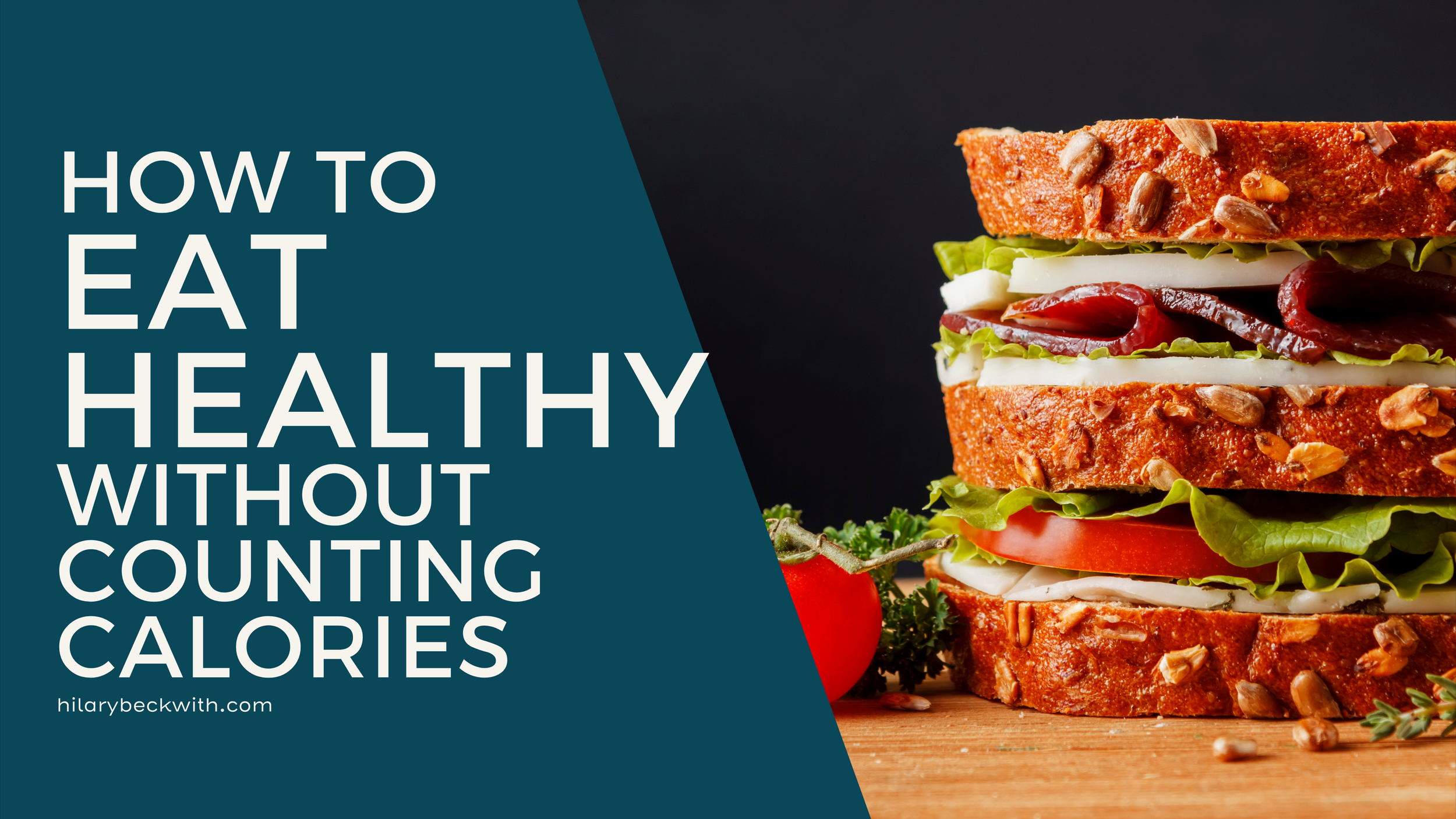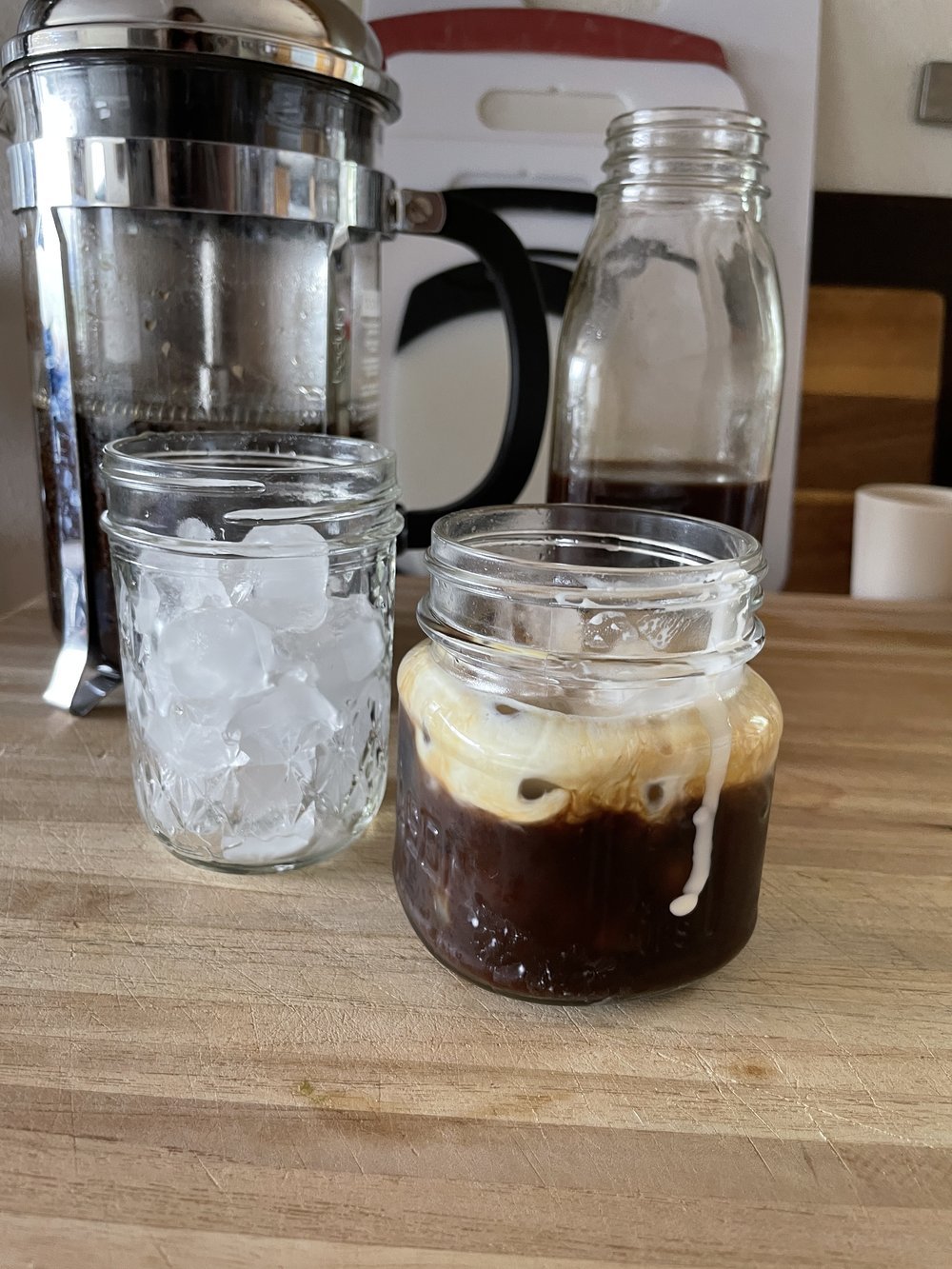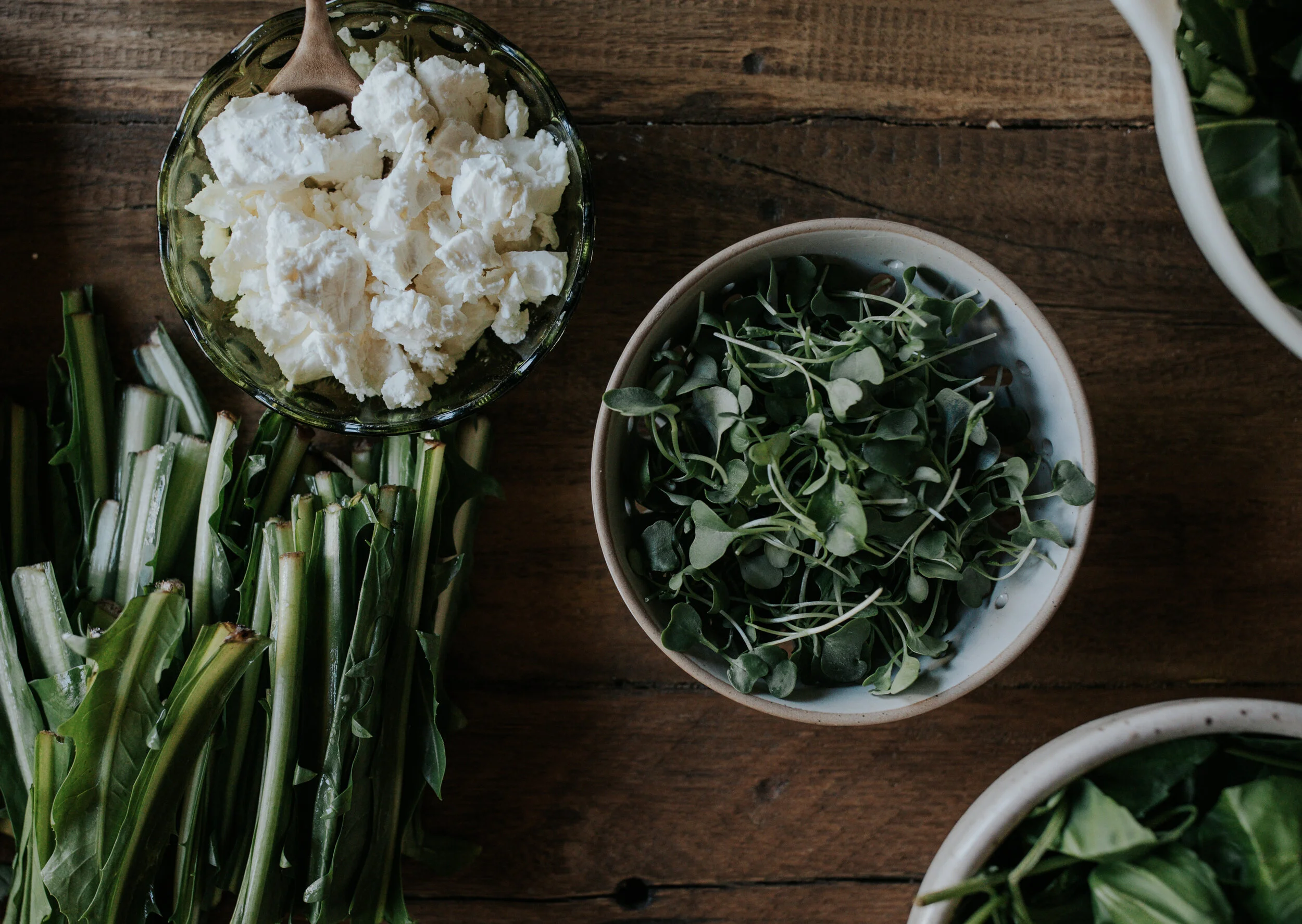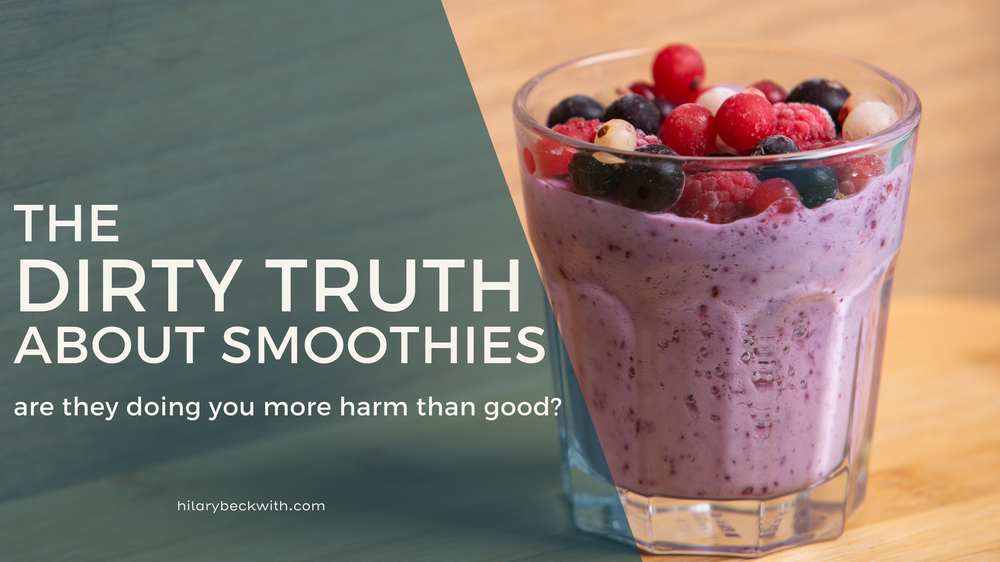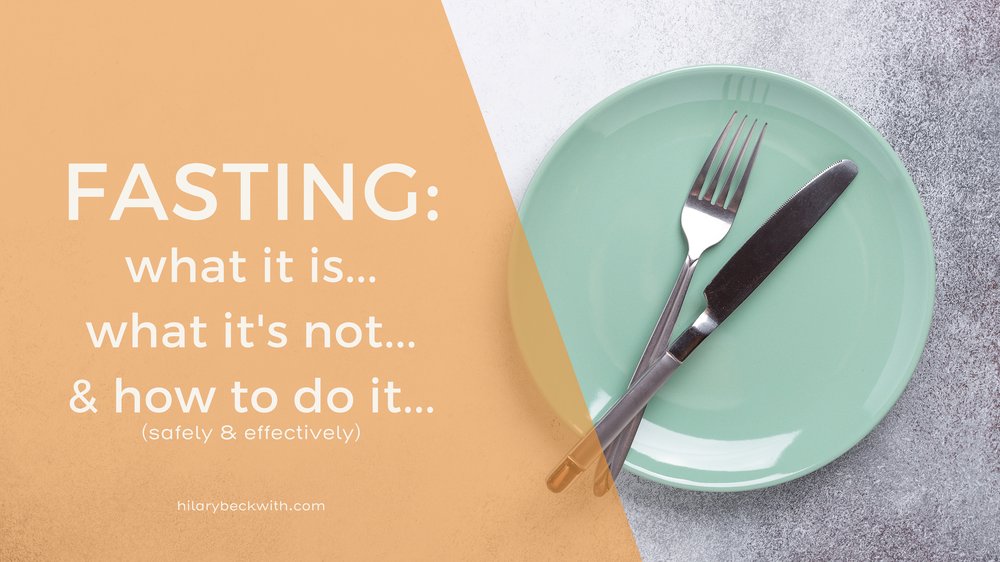Clean Eating 101
How your food is grown and processed, and where it comes from, are the biggest factors in determining what makes a food a "healthy food."
Some important questions to ask yourself when determining the quality of your foods are:
Is it organic?
Does that even matter?
Is it heavily broken down before it's added as an ingredient?
Was it grown and harvested in a way that is sustainable to the environment, and that does not put extra toxins into your body?
What other ingredients are in the food?
Healthy Eating Online Nutrition Course
Have you ever been at the grocery store, and tossed foods into your cart because they 'sound' healthy?
Or have you ever restricted your diet to avoid a certain food or nutrient, because you heard somewhere that it's bad for you?
(uh, hello, are you in my HEAD?!)
If you think I've been stalking you, it's because I've been there, too!
I've tried all the diets, I've bought foods because they sound healthy, I've played the guessing game, over and over... and I wasted a lot of time and money doing it…
...until I began to learn more about what really matters in regard to health.
Let's face it - healthy eating is confusing!
We all want to be healthier.
We get caught up in the myths:
healthy equals skinny
healthy equals strength & cardio training 5 days a week
healthy equals salads every meal
healthy equals foods that don't taste good
healthy equals having the energy to do ALL the things, ALL the time
But the truth is, we've been fooled.
the dirty truth about healthy eating
We've been fooled by the Dr. Phils and the marketing experts at Kraft, into thinking our foods have to say "gluten-free," "vegan," “all natural,” or "heart healthy" in order to be good for our bodies.
We are confused and ultimately misinformed by people we trust to have the answers.
And the reality is, we don't have the time (or even know where to begin) to do the research ourselves, so we just have to trust!
Well, lucky for you, friend, I have done the research.
I am a nutrition expert, and I'm here to help you dig your way out of that confusion.
I'm here to help you know how to decide for yourself what is best for your health, and your family's health.
3 PILLARS OF HEALTHY FOOD CHOICES:
bio-individuality
quality of ingredients
"good, better, best" mindset
BIO-INDIVIDUALITY: I see you scratching your head, don't worry. Bio-individuality is short for "biological individuality," meaning, what biological factors in your own body determine how well you can digest foods, absorb their nutrients, and eliminate waste. For example, we can't truthfully say "gluten is bad" for everyone, without knowing how their body processes gluten.
QUALITY OF INGREDIENTS: How your food is grown and processed, and where it comes from, are the biggest factors in determining what makes a food a "healthy food."
Some important questions to ask yourself when determining the quality of your foods, are:
Is it organic?
Does that even matter?
Is it heavily broken down before it's added as an ingredient?
Was it grown and harvested in a way that is sustainable to the environment, and that does not put extra toxins into your body?
What other ingredients are in the food?
GOOD, BETTER, BEST: This is a technique I teach my clients and live by in my own life. It is unfortunate (who am I kidding, it's actually maddening!) that quality, healthy foods are not accessible to every one, in every geographical location, and in every income bracket.
It is upsetting to me that we call foods that are heavily processed and filled with toxins, "conventional," consequently labeling quality foods as novelty items (and pricing them accordingly).
But the reality is, you have to do what is best for you, and especially if you have a family to consider.
When choosing foods, you need to consider:
availability
cost
moral considerations
community support
food allergies
picky eaters
religious considerations
(if there are any I missed, please add them to the comments!)
So, when it comes down to it, I can tell you what is "best," but you have to decide if it's what is sustainable for you. That's why I teach and advocate for the "good, better, best" mindset.
Okay, so how do I actually know how to choose healthy foods?
label-reading 101
Since I cannot assess your Bio-Individual needs through a blog post (wouldn't that be cool?! Or maybe creepy... never mind...), let's look at food Quality.
In the past, humans have not led such on-the-go lifestyles. We used to grow or forage our own food, eat seasonally, make our own flours, can our own vegetables & fruits, etc..
I do not need to tell you, we are no longer living that life.
What that has caused is the need for foods to become more shelf-stable. As food sensitivities increased due to stressed eating and poor gut health (and misinformation about what is "healthy" and not healthy), so have additives and fillers increased in our foods, to mimic textures of the real thing. Let's not forget the MONEY! Food manufacturers use techniques to increase profits, like using highly toxic (but deemed "safe") forms of fats and sugars to make their foods, rather than non-toxic forms.
It's easy to point to the reality that eating organic, fresh, whole foods is what's best for us (and it is). BUT... that's not what our lifestyles typically support.
This is why we need to learn to look at food labels to determine if what we're eating is healthy or not.
I'm not referring to "front-of-box" labeling - you've already been fooled by that, which is why you're here!
And I'm not talking about the "Nutrition Facts." Counting calories is not a form of healthy eating, and I do not advocate for it in most cases.
I'm talking about the ingredients list.
TIPS TO HELP YOU CHOOSE HEALTHY FOODS:
look for foods in their most whole form - avoid terms like "concentrate," "modified," or "hydrolyzed." These terms typically indicate the ingredient has been heavily processed, which often entails toxic methods.
avoid toxic oils & fats - the myth that eating "low fat" is healthiest, has been long debunked, but what we have to look for now, are fats that are heavily processed and toxic to our bodies. Remember, toxins prefer fat, so the quality of fats you take in is very important. Looks for oils and fats that are the "extra virgin," "expeller pressed," or "unrefined." Avoid (always): Canola, vegetable, rapeseed, safflower, and sunflower oils.
certified organic - This is a gray area. The term "organic" on a food label, is only as good as the entity that certified it as "organic." In other words, the standards of organic are different for each organic certifier. According to the USDA, organic means it contains no GMOs, & no synthetic pesticides were used.
A food can be labeled organic without actually having been regulated by anyone, and the opposite is true as well (a food may not be labeled organic, even though it follows organic standards).
Your best bet - get to know your farmers.
whole grain - Eating grains in their whole form is crucial to ensuring we get important nutrients, and reducing our inflammatory response. In the US, the term "whole grain" means that the product has to consist of at least 50% whole grains. But it's important to look at what the remaining 50% consists of. If you're eating "whole grain" bread, that also contains sugars, rice flour, and potato starch... you see where I'm going with this...
preservatives, emulsifiers, and chemicals - There are a lot of foods and products that are labeled as being "pet safe," or "kid safe," but it does not necessarily mean they are things we should be putting into (or on) our bodies.
The list of what to avoid is far too extensive for this little article, but in short, it's best to avoid:
ingredients with more than 4 syllables
ingredients with all CAPS
ingredients ending in a-t-e
ingredients you cant pronounce, or have never heard of
ingredients associated with a number
ingredients preceded by "enriched"
Pin this one to your boards to help cement it in…
Feeling a bit better about your future shopping trips?
I love talking about this stuff because it consistently comes up in conversations, that we are all so confused about what it takes to be healthy.
It's exactly why I developed the Kitchen Detox Workshop.
The Kitchen Detox Workshop is worth its weight in gold, friend. We scratched the surface in this article, but the workshop dives deeper into those factors, plus a few others. It also gives you hands-on tools to help you inventory your own kitchen, and stock your kitchen with only quality, wholesome foods.
Put differently, the Kitchen Detox Workshop helps you to make healthy food choices, every single time you eat.
Ditch the guilt of eating "bad" foods.
Stop playing the guessing game at the supermarket.
Stop wasting money on fruitless health hacks.
Make healthy choices that really matter.
Tap the button below to learn more about Cut the Crap, my online label-reading course to help you spot health scams and make healthy food choices more confidently.
NUTRITION SERVICES
MORE RESOURCES
Make Cold Brew Coffee At Home (you will never go back!)
As a nutritionist, I can tell you that your craving for afternoon coffee has everything to do with adrenal dysfunction or blood sugar…
But I’m not going to get into that today, because the reality is, on a warm summer day in Seattle, there is nothing better than sipping a super smooth, rich, icy cup of cold brew coffee.
Cold brew coffee is stupid easy to make in any case, but this method blows all others out of the water.
Cold-Brew Coffee Recipe
I’m going to get straight to the point here.
I. Love. Coffee.
As a nutritionist, I can tell you that your craving for afternoon coffee has everything to do with adrenal dysfunction or blood sugar…
But I’m not going to get into that today, because the reality is, on a warm summer day in Seattle, there is nothing better than sipping a super smooth, rich, icy cup of cold brew coffee.
Cold brew coffee is stupid easy to make in any case, but this method blows all others out of the water.
Concerned about caffeine? Here’s a great resource for you.
Let’s get to it.
cold Brew coffee concentrate
WHAT YOU NEED
9oz. coffee beans (choose your favorite roast), ground course
3.5 cups (28oz.) filtered water, room temperature
2-quart French press, or 2-quart measuring cup
Cheese cloth, old (clean) T-shirt, or nut-milk bag (skip this if using a French press)
Himalayan or Celtic Sea salt (optional)
INSTRUCTIONS
In the French press or measuring cup, place the ground coffee beans. Gently add the filtered water, ensuring all grounds are immersed, let sit for 10 minutes.
Gently stir the grounds to re-wet them. Cover and let sit at room temperature for 24 hours.
If using a French press, press and pour into a glass container with a tight-fitting lid. If not using a French press, filter through cheese cloth, T-shirt, or nut milk bag, and store in a glass container with a tight-fitting lid.
To serve, dilute 1:1, water to concentrate (or pour over ice). Add cream or sugar, if that's how you dig it, and enjoy pure bliss!
This concentrate can be stored in the refrigerator for up to 7 days.
did you make this recipe?
Share your experience in the comments!
NUTRITION SERVICES
MORE RESOURCES
Easy Weeknight Recipe: Mediterranean Superfood Bowl
This recipe is my favorite in terms of versatility and nutrient density. It’s the perfect healthy recipe for easy summer evenings.
The ingredients can be switched up easily without risking flavor components and can easily adapt to your nutritional needs. The romesco is plant-based on its own, so there’s no need to adapt if you eat vegan.
Easy Healthy Vegan Recipe
This recipe is my favorite in terms of versatility and nutrient density. It’s the perfect healthy recipe for easy summer evenings.
The ingredients can be switched up easily without risking flavor components and can easily adapt to your nutritional needs. The romesco is plant-based on its own, so there’s no need to adapt if you eat vegan.
While the fresh vegetable component does not make this a freezer-friendly meal, the sauce does freeze well. In fact, we eat these often in my home, so I typically will double or triple the recipe for romesco and freeze it in individual portions.
One batch of sauce, greens, & grain, makes 4 bowls. Top to your tummy’s content to make the tastiest healthy recipe!
Want to know how to choose the best quality ingredients for this recipe? This is the best resource for understanding food labels.
Let’s get to the recipe!
Mediterranean superfood bowls - plant-based and vegan-friendly
FOR THE SAUCE:
16oz JAR ROASTED RED PEPPERS (OR ROAST YOUR OWN!)
1 CLOVE GARLIC, PEELED
½ TSP SEA SALT (MORE TO TASTE)
JUICE OF 1 LEMON (ABOUT ¼ CUP)
½ CUP EXTRA VIRGIN, COLD-PRESSED OLIVE OIL
½ CUP WHOLE, RAW ALMONDS
FOR THE BOWLS:
2 CUPS LOOSELY PACKED, CHOPPED (PICK ONE):
DANDELION
ARUGULA
SPINACH
BABY KALE
½ CUP UNCOOKED GRAIN (PICK ONE) (omit, if you’re grain-free):
QUINOA
WILD RICE
FARRO
PICK 1-2 FATS/PROTEINS:
OLIVES (KALAMATA, GREEN, BLACK)
RAW PUMPKIN SEEDS, LIGHTLY TOASTED
CRUMBLED FETA CHEESE
QUALITY HUMMUS (OR CHICKPEAS!)
AVOCADO
PICK 2-3 (OR 4 OR 5) HERBS/VEG/OTHER TOPPINGS:
HEIRLOOM DICED TOMATOES
DICED CUCUMBER
MICROGREENS
SLICED RADISHES
ARTICHOKE HEARTS
PEPPERONCINI
CHOPPED CAULIFLOWER
THINLY SLICED RED ONION
SLICED GREEN ONIONS
FRESH CILANTRO/ITALIAN PARSLEY/BASIL, CHOPPED
LEMON JUICE
EXTRA VIRGIN OLIVE OIL
SALT & PEPPER
SLICED JALAPEÑOS
Cook the grain you selected according to package directions (unless omitting). Allow to cool to room temperature.
Place all sauce ingredients in a blender or food processor fitted with a chopping blade. Blend/process on high speed until desired consistency (I prefer it a tad on the “chunky” side).
Prepare the greens and other toppings. There is no hard & fast rule to this – go with your favorite textures & flavors! I prefer my ingredients to be more finely chopped, giving it a “chopped salad” mouth feel, but you may enjoy a chunkier texture.
Divide the greens, grains, sauce, then your toppings, among 4 separate bowls. Enjoy right away, or store in airtight glass containers. Will last 4-5 days in the refrigerator, depending on ingredient freshness.
did you make this recipe?
How’d it go? Share your thoughts in the comments!
NUTRITION SERVICES
MORE RESOURCES
Are Smoothies Good For You?
While all those things may be true of smoothies, if you've been following me for any amount of time, you know that the idea of salads & smoothies as a way to eat healthy (or even the idea of having a "beach body") is pure misinformation.
HOWEVER, I am fully aware that it is really easy to get sucked into anything we hear or read that will make us healthier!
I mean, we've been conditioned to believe that "nothing tastes as good as skinny feels," right?
Are smoothies healthy?
Summer tiiime, and the livin's easy…
The sun is finally out to play for a while, and it’s also a time for fresh berries, delicious greens, and the need for a cool treat.
When we think healthy food, our brains often go to foods like salads or smoothies.
Loaded with fruits and veg, these foods are the epitome of modern “health foods”.
But it's tricky to fit salads into our busy schedules, so we go for smoothies instead. We opt for smoothies because they are:
Quick.
Nutritious.
Healthy.
A Sweet Treat.
And Easy to Grab and Go.
While all those things may be true of smoothies, if you've been following me for any amount of time, you know that the idea of salads & smoothies as a way to eat healthy is pure misinformation.
HOWEVER, I am fully aware that it is really easy to get sucked into anything we hear or read that will make us healthier!
I mean, we've been conditioned to believe that "nothing tastes as good as skinny feels," right?
Well, my friend - I am here to rock your world.
I am not suggesting smoothies in and of themselves are unhealthy for you.
Not at all.
But it’s important to look at all the information.
I became a holistic nutrition expert because I want to offer factual information that will help you change the way you view health and advocate for your body. And to do that, you need to have a better understanding of how your body works.
I love to debunk misinformation I hear and offer facts to help you make more educated choices.
So, I'm about to say something you may not have heard before...
SMOOTHIES MAY BE DOING MORE HARM TO YOUR HEALTH, THAN GOOD.
Yup!
It's true, there are health benefits to smoothies, mostly in the realm of concentrated nutrients.
But what if I told you your body can't absorb and use those nutrients very effectively? Would it actually be more nutritional to eat a cheeseburger?
Let's talk about it.
the dirty truth about smoothies
What are the primary reasons you drink smoothies?
high concentration of antioxidants & nutrients
sweet treat
filling without too many calories
convenient
fast
easy to carry
We drink smoothies because we are busy, and we want to eat healthy, and we want a choice that will be easy to consume while we juggle our busy life.
Are we on the same page so far?
Cool.
Now, let's review a little Digestion 101.
In order to digest food, our body must be using its parasympathetic nervous system (rest and digest), meaning, you must be relaxed & not multitasking while eating. Our brains recognize rushing around (even if you’re not feeling "stressed") as a stressor, and respond with the sympathetic nervous system (known as fight or flight), which actually inhibits digestion.
Proper chewing begins the digestive process by releasing enzymes in your saliva to begin the breakdown of food. The type of food you eat will tell your brain which enzymes are needed.
If switched into rest and digest state, once food enters the stomach, hydrochloric acid (AKA stomach acid, or HCl) is released to disinfect the food, and triggers other enzymes to be released or activated.
The now acidic food is neutralized as it begins to enter into your small intestines, which is where nutrients are transported through the wall of the intestines, and into your bloodstream, where they are carried to the liver to be delegated. If digestion is not working properly, this is where foods that are not properly broken down will enter the bloodstream, causing damage to the gut lining, and food sensitivities.
The large intestine is where the majority of water and fats are absorbed into the bloodstream. The fiber that remains (fiber is undigestible by human enzymes but is needed to feed our "good" bacteria) will feed our microbiome, and anything left will be excreted as waste.
why smoothies should not be considered a health food
So, now that you can see the big picture, let's break it down some more.
We know that eating while on-the-go (sympathetic nervous system), inhibits our digestive processes altogether.
…and…
Not properly chewing inhibits your body’s ability to produce adequate enzymes & HCl.
…therefore…
Drinking smoothies while on-the-go (as we typically do) ensures we are not getting the nutrients we intend, and is actually causing damage to our gut health.
So, it's fair to ask the question, are you really improving your health by drinking smoothies?
I'm not saying smoothies are bad for you... Smoothies are not the villain.
But the dirty truth is, if you are not sipping that smoothie while seated at a table with friends or family, or on a park bench, and not scrolling through your phone, AND if you're not "chewing" your smoothie - your smoothies are doing far more harm than good.
So... How do we get past this? Do I have to STOP drinking smoothies in order to eat healthy?
NOT AT ALL.
Smoothies, when properly made and consumed, are a phenomenal source of fiber, antioxidants, minerals, & other nutrients.
how to ensure your smoothies are doing more good than harm:
think small - if you wouldn't eat a bundle of spinach and a pint of blueberries in one sitting, don't put that in your smoothie.
change it up - our body needs a variety of nutrients, many of which are called "cofactors," meaning, it is needed in order to make a system or other nutrient function properly. Change up what you put in your smoothie - choose seasonal foods, and try to rotate them throughout the week.
make it green! - it is easy with smoothies to fill it up with more sugary fruits, like berries and bananas. Opt for more greens than fruits in your smoothies, and don't be shy with the fats and proteins (nuts, seeds, and whole milk plain yogurt are great for this!). The abundance of fiber, fat, and protein will help your blood sugar to stay steady (that "hangry" feeling you get a couple of hours after a smoothie, will DISAPPEAR).
BONUS TIP FOR MAXIMIZING NUTRITION: Change it up! Tempted to always grab that bag of kale or spinach for your smoothies? A variety of foods will improve the variety of nutrients you get from your smoothies, and will prevent food sensitivities from developing.
sit down to drink it (driving does not count!) - as with any meal, it is crucial to switch our body into "rest & digest" mode. Before you take your first sip, sit down at a table, on a park bench, or on your stoop, turn off your computer/phone/TV, and take 5 long, deep breaths.
"chew" your smoothie - Take smaller sips, and allow the smoothie to stay in your mouth for a few seconds. You will notice the volume will increase in your mouth - this is your salivary digestive enzymes being released! Give them space to do their job!
**For those who don't like the feeling of leaving smoothie in their mouth for so long, I recommend adding some seeds or cacao nibs in the last few seconds of blending of the smoothie, chopping them up just enough to get through the straw. This will give you something to chew on with every sip.
my favorite smoothie recipe
Here is one of my favorite go-to smoothie recipes:
1/4 granny smith apple (core and peel intact)
fingertip-sized cut of ginger, peeled
squeeze of lemon juice
handful of dark greens (dandelion, kale, arugula)
handful of wild blueberries
just enough liquid to help it blend (I like to use cow's milk or cashew milk)
raw pumpkin seeds - blend thoroughly to add creaminess to your smoothie, then add a few more in the last few seconds to give you something to chew on)
When I want to add more "umph" I toss in a dollop of whole milk plain yogurt, a hefty spoon of nut butter, or a scoop of quality collagen peptides.
Smoothie blending tips and tricks
Add your chunky bits and liquids first, then greens on top. These bits are easier for most blenders to "grab," then the momentum will allow the greens to blend in nicely.
Start on a lower speed to chop first. Once you have the texture of a nice pico de gallo, increase to a higher speed to smooth it out. This prevents the dreaded **blade is spinning, but food is not catching** scenario (there's gotta be a name for that, right?)
What are the foods you LOVE to put in your smoothies?
Share your smoothie loves in the comments!
NUTRITION SERVICES
MORE RESOURCES
Everything You Need to Know About How to Fast
Fasting has been used for centuries, as a powerful healing tool to cure disease, kill cancer cells, lower cholesterol, reverse diabetes, improve insulin sensitivity... the list goes on!
I love fasting. I think our society would benefit greatly from making fasting a regular part of our lives. And because of my own success with it, I REALLY get lit up when talking about it!
I've been practicing intermittent fasting for a few years now, and have seen tremendous health benefits from it. By practicing intermittent fasting, I've eliminated my hypoglycemia, nearly obliterated my PCOS symptoms, and lost weight.
Intermittent Fasting for Weight Loss
Fasting has been used for centuries, as a powerful healing tool to cure disease, kill cancer cells, lower cholesterol, reverse diabetes, improve insulin sensitivity... the list goes on!
I love fasting. I think our society would benefit greatly from making fasting a regular part of our lives. And because of my own success with it, I REALLY get lit up when talking about it!
I've been practicing intermittent fasting for a few years now, and have seen tremendous health benefits from it. By practicing intermittent fasting, I've eliminated my hypoglycemia, nearly obliterated my PCOS symptoms, and lost weight.
And because fasting has been an important part of my personal healing, the topic has come up quite a bit in my conversations, both personal, and professional.
As it turns out, what I am gathering from these conversations, is there is a lot of confusion as to what "intermittent fasting" is, how it's intended to be used, and what its benefits are. In fact, most people I hear this from aren't really aware that they are confused. They've been misinformed.
And so... I am here to help clear the air.
EDIT: You can read my newer writings about fasting here.
the dirty truth about diets
I'm clearly an advocate for fasting. I have seen immense benefits from fasting, in my own health as well as in others'.
However, it is important to recognize, when beginning ANY new dietary regimen, to first consider your body's unique health needs.
Put differently, eating [vegan/gluten-free/low-fat/keto/paleo/vegetarian] is NEVER what determines whether or not you are "healthy."
What DOES determine whether or not you are "healthy" is assessing your body's unique health needs, and addressing them specifically. One diet is never "healthier" than the other without consideration to bio-individuality.
That said, I would never recommend fasting to anyone who has not been properly assessed, to determine whether it's a safe and viable option for their body.
Let's look at some of the more common confusions about fasting.
WHAT FASTING IS NOT
Fasting is not:
calorie restriction
forgetting to eat
an excuse to eat whatever you want on non-fasting days
a way to atone for dietary sins
WHAT FASTING IS
Fasting is:
intentional
evolutionarily a normal way of life
an effective & safe method of increasing sensitivity to insulin
facilitates the clearing and recycling of damaged cells
easier to stick with than calorie-restrictive diets
WHO IS FASTING FOR?
people prone to insulin resistance (Type-II diabetes, PCOS, hypoglycemia)
people who find it difficult to lose weight
people wanting to optimize cellular health
people prone to cancer
people wanting to maximize lean muscle building
people who are well nourished, and have above-normal BMI
WHO IS FASTING NOT FOR?
those who are pregnant
female-bodied people, during their menstrual cycle
children
people who are underweight, malnourished, or below-normal BMI
people with an eating disorder
fasting terminology
The term that's probably most familiar to you, is Intermittent Fasting (IF).
Since IF resurfaced as a trendy new weight loss diet a few years ago, we were mistakingly referring to Time Restricted Feeding (TRF) as IF.
As commonly happens when a trend gets marketed by misinformed influencers, we have simply just adopted the two as interchangeable (which is fine, everything is fine...).
I'm going to explain the differences between those terms, as well as a few others, to help you understand better when we begin discussing how to fast, and the benefits of different types of fasting.
Time Restricted Feeding (TRF) = Eating all your calories within a small window of time each day. Commonly described as "16/8," or "12/12," meaning, you consume all your calories (as many as you like) within only an 8 hour window, consequently "fasting" the other 16.
Intermittent Fasting (IF) = Sometimes referred to as Alternate-Day Fasting. IF is a no-calorie fast for anywhere from 24-72 hours, and is followed up with a strategic re-feeding regimen. The important piece here is the re-feeding (more on this later).
Think of it like this: the word "intermittent" means to do something at irregular intervals. IF is typically done 1, 2, or 3 days out of the week, each followed by a re-feeding. Whereas a 16/8 TRF is typically regularly done every day (it's consistent, steady).
Extended Fasting (EF) = Fasting that lasts longer than 72 hours is typically referred to as Extended Fasting." Don't panic! There is plenty of research to show that extended fasting does not starve our bodies, does not break down muscle, and has huge benefits, but it is not for everyone. We will get more into this later.
intermittent fasting benefits
When fasting comes up in conversation, I most commonly talk with people who are doing it for weight loss.
I mean, it's extreme calorie restriction, right? Why wouldn't you lose weight?
This, my friends, is the response of a misinformed culture.
In reality, if you are properly re-feeding after a fast, you are not restricting calories. The full benefits of fasting go far deeper than just weight loss.
Fasting benefits:
IMPROVES CELLULAR HEALTH - Cells take on severe damage from our western diet of processed foods. The amount of sugars and starches we eat cause immense free radical activity, damaging the structure of our cells, leading to chronic inflammation and tissue damage. Toxins from air, water, & pesticides cause mitochondrial dysfunction, and can interfere with nutrients getting in and out of cells.
The health of our cells is essential to ensuring the nutrients we take in are able to be used. Healthy cells are necessary for energy production, nerve function, and immune function.
Our bodies have a system for repairing damaged cells (called autophagy), and destroying harmful cells (called apoptosis). These processes happen in times of fasting. When we are constantly snacking, grazing, and especially on highly processed foods, we do not give our body the chance to heal.
Proper fasting will improve your body's ability to heal damaged cells and eliminate harmful cells (cancer).
INCREASES FAT BURNING - Going back to my Sugar Balance post, you might recall that sugar, in the form of glucose, is needed to produce energy. When insulin has shuttled all the glucose it can into your cells for energy production, your body stores excess glucose in the form of glycogen. When glycogen stores are full, the rest gets converted to triglycerides and are stored as fat tissue.
Our bodies can store about 24 hours’ worth of glycogen in the liver, but there is no limit on how much fat that can be stored. In times of low glucose (such as in fasting), our body will use the glycogen to produce the energy it needs. Once those stores are used up, our bodies will convert triglycerides into glucose (or ketones) to be used for energy (known as fat-burning).
Proper fasting, especially for longer than 24 hours, will increase fat burning in your body. When done intermittently, and with proper re-feedings, your body can be "taught" to burn fat more efficiently.
IMPROVES INSULIN SENSITIVITY - As we know, when glucose enters the bloodstream, our body responds by releasing insulin from the pancreas. Insulin's role is to shuttle the glucose into cells. Think of your cells as having a locked door, and insulin is the key to the lock (insulin receptor).
Eating processed foods, starches, grains, sugars, etc., causes glucose levels to spike, causing insulin to be released more rapidly. When we eat like this frequently, insulin is, you guessed it, also released more frequently.
Over time, our cells begin to react to the abundance of insulin by saying, "we've had enough!" and reduce the number of insulin receptors available. This is the start of "insulin resistance."
Fasting reduces the amount of glucose in the blood, thereby reducing insulin response, thereby increasing insulin sensitivity. With proper eating and stress management, symptoms of hypoglycemia ("hangry") disappear.
**It's important to mention here, that most foods, not just sugars, will cause insulin response.
IMPROVES MICROBIOME - If you have ever been told you have leaky gut, Irritable Bowel Syndrome, or digestive issues like bloating, belching, farting, or general abdominal discomfort, it is possible you have a bacterial imbalance in your gut.
Simply put, your body is supposed to have certain types of bacteria, and those bacteria should only be living in your large intestine. When bacteria begins to live and grow in your small intestine, that's when we begin to see issues like the ones I mentioned above.
Our bodies have a mechanism for preventing this from happening, and guess what--it occurs during the absence of food...
It is called the Migrating Motor Complex (MMC), and it is what causes the "growling" when you're hungry. A hormone called motilin triggers a series of events, such as the release of bile and pancreatic enzymes, and smooth muscle contractions, which "sweep" out the small intestine of any bacteria.
When we constantly graze, and especially foods containing starches, sugars, or grains, we not only don't allow the MMC to do its job, but we are also feeding the harmful bacteria that shouldn't be there, allowing them to thrive and cause further imbalance.
Fasting gives way to the MMC, helping to reduce and eliminate unwanted bacteria, improving your digestive health.
INCREASES LEAN MUSCLE MASS - Research has shown that in the absence of insulin, our body has significantly elevated Growth Hormone levels. You've probably heard of GH used by body builders and athletes.
Fasting helps you increase these levels naturally, without the use of potentially harmful supplements. With a strategic fasting + re-feeding plan, fasting will help you build lean muscle, more effectively.
guide to intermittent fasting
Fasting is simple. Fasting is not eating or consuming calories. Its simplicity is, in part, why I think it's much easier to comply with than calorie-restrictive diets, or specific food-restrictive diets.
It's what makes fasting a sustainable & effective approach to health.
Which type of fasting you choose, Time Restricted Feeding, Intermittent, or Extended, depends on what you want out of it, and what your body can safely tolerate.
Time Restricted Feeding: This is essentially a calorie-restrictive diet, with a few added perks.
does: improve insulin sensitivity & MMC function
does not: facilitate autophagy, apoptosis, or fat-burning
Intermittent Fasting:
does: improve insulin sensitivity, MMC, autophagy, fat-burning, & lean muscle
does not (depends): facilitate apoptosis. Apoptosis generally occurs after 48 hours of fasting, so depending on the duration of IF, you may or may not get this benefit.
Extended Fasting:
does: improve insulin sensitivity, MMC, autophagy, fat-burning, lean muscle, & facilitate apoptosis
All of the benefits apply here. Which makes it easy to say, "why don't we all do that?!"
But EF is not for everyone. In fact, all of these fasting techniques should be approached with caution, and gradually progressive, even TRF. If you are new to fasting, always approach fasting in small increments, gradually working your way up.
This is a perfect transition into fasting DOs and DON'Ts.
Fasting DOs
DO... Always consult a qualified health care practitioner prior to changing your eating or supplement regimen.
DO... Always listen to your body. You are not a robot. Waves of hunger are normal during a fast, but feeling any signs of unwell (e.g. lightheaded, queasy, feverish, pain, etc.), are signs you should STOP fasting immediately.
DO... Be intentional about hydration. A lot of our daily hydration comes from certain foods we eat, especially fruits & vegetables. Be intentional about drinking at least half of your body weight, in fluid ounces, of water. Adding Himalayan Sea Salt to your water (just a pinch) will provide necessary electrolytes to hydrate you more effectively. Avoid dehydrating factors, like excess caffeine. It is okay to drink small amounts black coffee, green tea, and herbal tea.
DO... Properly re-feed your body. As we discussed earlier, fasting is not an excuse to eat whatever you want during non-fasting times. In regard to cellular health, especially, fasting is what allows our body to clean up damaged parts of cells, but re-feeding is when the cells are repaired. Be intentional about eating habits that include lots of vegetables, quality whole-food proteins and fats, and only consuming grains in their whole, unprocessed forms. On re-feeding days, consume a bit more food than you typically would. I'm not suggesting you put a buffet out of business, but as an example, if you typically have 2 eggs and half an avocado for breakfast, consider having 3 eggs, and a whole avocado on a re-feeding day.
DO... Prioritize sleep. Sleep is when our body hits healing mechanisms HARD, whether fasting or not. Turning off screens 2 hours prior to bedtime, avoiding sugary foods close to bed time, not drinking caffeine past 10am (yes, that early) - set guidelines in place that ensure you will get quality sleep, especially when fasting.
DO… Follow a normal circadian cycle. Both when fasting and not fasting, plan your activities (including eating) during daylight hours, resting during dark hours. This is the natural rhythm of our bodies and will hugely benefit your body’s ability to digest food and assimilate nutrients, in order to ensure proper cellular healing.
DO... Continue normal routines. This may be challenging as a beginner, but you will find over time, that you have plenty of energy and mental clarity (if not improved) to do your normal workouts, projects, and tasks. Fasting does not mean you need to stop all of these things, although I do advise beginner fasters to stick with light cardio and/or weights, and to work out with a trusted friend until they feel more comfortable.
DO... Stay busy. Staying busy is the easiest way to keep your focus off of food.
DO... Plan your fasts according to your schedule. The loveliest thing about fasting is that YOU make the calls. With food-restrictive, or calorie-restrictive diets, you have to be ON all the time. But fasting allows flexibility, while still giving room for success! Set yourself up for success by switching it up if needed, and give yourself room for grace if you end up backing out of a fast.
Fasting DON'Ts
DON'T... Consume calories. There are a lot of variations of "fasting" out there, and lots of misinformed media posts. When a resource tells you it's okay to consume 500-600 calories during a fast - that is not fasting, friends. That is calorie restricting, and it will not provide the same benefits as fasting.
As Dr. Jason Fung points out in his book The Complete Guide to Fasting, all foods produce an insulin response. When insulin is present in the blood, fat stores cannot be released. When calories are decreased, but insulin levels remain, our body preserves energy by slowing metabolism. But when insulin is absent (as it is with fasting), the body releases fat stores for energy use, rather than slowing metabolism.
If you've worked with me before, you know my whole career is based on eliminating the rigidity of diets and eating to suit your body's specific needs. If calories must be added to your fasting routine, opt for quality, whole-food fats (coconut oil, MCT, grass-fed butter). These cause the lowest insulin response.
DON'T... take any tissue-building supplements (folic acid, protein powders, collagen, etc.). Instead, save them for your re-feeding phase to enhance the cellular "clean-up" that fasting facilitates.
your turn!
You now have some tools in your belt, the air is cleared, and the world is your oyster (someone please tell me what that means!).
Ask yourself what you want out of fasting, then decide which technique is best for your body’s needs.
Have questions about intermittent fasting? Ask them in the comments below.
NUTRITION SERVICES
MORE RESOURCES
